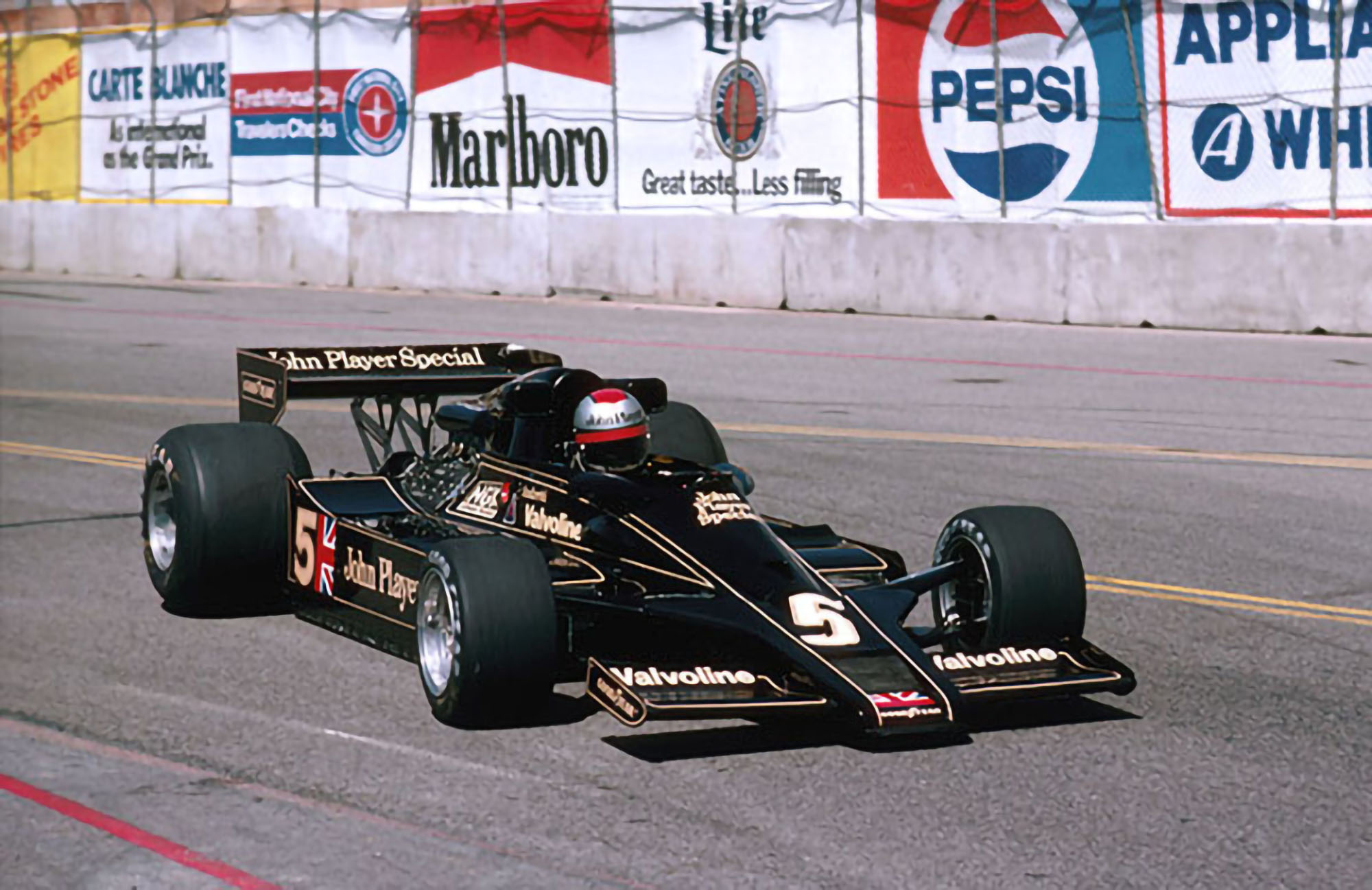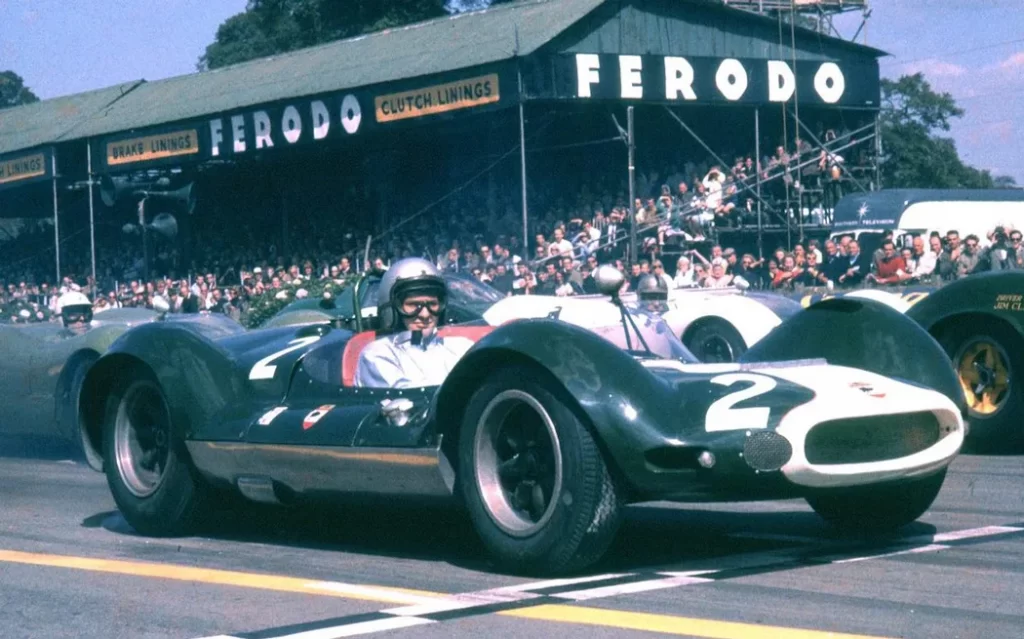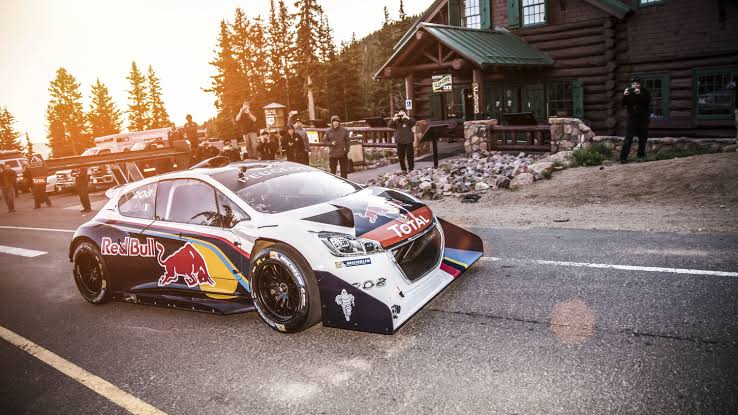We take a look at some of the racing cars and people that have shaped motorsport today.
The Lotus 78, also known as the “Wing Car,” was developed by the Lotus team in 1977. It was the successor to the Lotus 77, which had been a disappointment for the team during the 1976 championship season.
The 78 was designed to be more aerodynamically efficient than its predecessor; Colin Chapman’s main criteria was to gain more downforce and high-speed stability with improved aerodynamics.
The most significant feature of the 78 was its innovative ground-effect aerodynamics, which used the underside of the car to create downforce. This was achieved through the use of wing-like panels on either side of the car, which were mounted close to the ground and extended from the front to the rear of the car. These wings created a low-pressure area under the car, which in turn created a vacuum that sucked the car down onto the track.
The idea of using the underside of a racing car to generate negative pressure and effectively suck the car towards the track had first been exploited by Jim Hall’s Chapparal Can-Am sports cars in the 1960s. But those cars had wide, wheel-enclosing, bodywork. Getting the principle to work on an open-wheel single-seater initially seemed unfeasible.
The car that was to make that breakthrough was the Lotus 78, which ushered Formula 1 into the era of ground effect.
The design team included Colin Chapman, Martin Ogilvie, and Tony Rudd, who was newly appointed to be in charge of R&D. He was joined by Ralph Bellamy, ex-Brabham and McLaren, and Peter Wright, of BRM and Specialised Mouldings.
Wright had been researching a wing-car at BRM, but they had not yet developed the important part, the side-skirt which stops air sucking in underneath. Then when he was at Specialised Mouldings, he suggested to Robin Herd of March F1 that they put a stub wing on the sides of their March 701. Of course, it had no side-fence, and the car worked well but it wasn’t the breakthrough that was sought after.
True ground effect follows the Bernoulli principle which says that air passing through a venturi accelerates and the pressure decreases. That wasn’t appreciated in these early experiments; they were merely putting a wing on the side of the car. Then they found they had made half venturi, with the ground as the other half, and had to stop the air coming in from the side as best they could. On the 78 they used a brush, which was a start; it gradually developed into a proper siding skirt on the 79.
The 78 was powered by a Ford Cosworth DFV 3.0-liter V8 engine, which produced around 485 horsepower, connected to a Hewland FGA five-speed manual transmission.
The 78 made its debut at the 1977 South African Grand Prix, with Mario Andretti behind the wheel. Andretti finished third in the race, and the 78 went on to score two more podium finishes in its first three races.
Throughout the 1977 season, the 78 proved to be a formidable car, with Andretti and teammate Gunnar Nilsson regularly finishing on the podium. Andretti won three races that year, and Nilsson won one, with both drivers finishing the season in the top six of the championship.
“Through the 1977 Championship, Mario Andretti led more race laps than any other driver”
In 1978, the 78 continued to be successful, starting the season while the 79 was being completed. Andretti won the opening race, while both Andretti and Nilsson finished on the podium several times. However, they faced stiff competition from the new Ferrari 312T3.
Despite its strong performance, the 78 was eventually replaced mid-season by the Lotus 79. The 79 was an evolution of the 78, with a more powerful engine and refined aerodynamics. It was the car that would ultimately take the Lotus team to the World Championship in 1979, with Andretti winning the title.
In all, the Lotus 78 took seven Grand Prix wins, had nine pole positions and seven fastest laps, scoring a total of 106 points in its career. Its ground-effect aerodynamics set the standard for future Formula One car, and it helped to re-establish Lotus as a leading team in the sport.
Today, the Lotus 78 is remembered as a pioneering car that helped shape the future of Formula One.
Its innovative design and impressive performances have made it a fan favorite, it remains a significant part of Team Lotus history.




